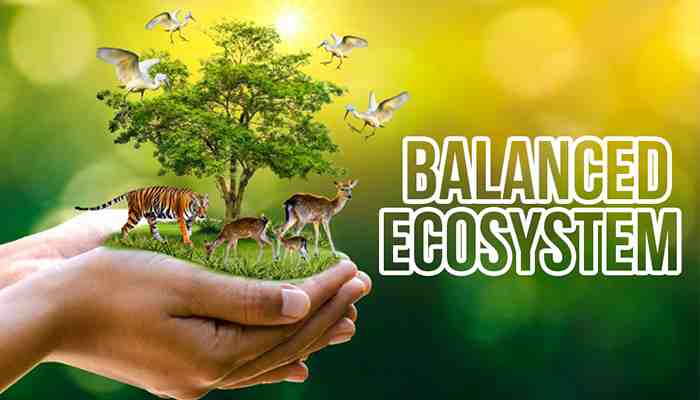
Paragraph On Balance In An Ecosystem for Students of Class 5,6,7,8 and 9
The concept of balance in an ecosystem is nothing short of fundamental in the intricate web of life that is our planet. “Paragraph on Balance in an Ecosystem,” we will go through the fragile balance that nourishes all living forms on Earth. Understanding this balance is not only fascinating, but also critical to conserving the natural world as we know it. In the following paragraphs, we’ll look at the complicated dance of species, resources, and environmental conditions that shape and maintain ecosystem equilibrium, providing light on the incredible interconnection that characterizes our planet’s biodiversity.
Paragraph On Balance In An Ecosystem
Balance in an ecosystem is the cornerstone that sustains the remarkable diversity of living forms in the beautiful tapestry of life on Earth. Every species, from the most powerful predator to the most insignificant bacterium, performs a distinct function in preserving the balance of its environment. This balance is not a static situation; it is a dynamic and ever-shifting harmony, similar to how each instrument contributes to the overall melody in a symphony.
The concept of dependency is one of the most important parts of ecological equilibrium. Species interact with one another in a variety of ways in any ecosystem. Predators control prey populations, herbivores form plant communities, and decomposers convert organic materials into nutrients that nourish plants. It’s a marvelously sophisticated dance of give and take, with each participant having a role to perform, and when one partner falters, the ecosystem suffers.
Consider the classic case of wolves in Yellowstone National Park. When wolves were reintroduced to the park after an almost 70-year absence, their impact was astounding. The wolf’s predation on elk reduced elk numbers, allowing for forest regeneration and the reintroduction of songbirds, beavers, and a variety of other species. The existence of a single top predator, the wolf, not only balanced the elk population but also had cascading impacts on the entire ecosystem.
But equilibrium is more than just predators and prey. Abiotic variables like as climate and geology are also involved. A change in temperature or rainfall patterns might disrupt the carefully regulated interactions between species. Human activities such as deforestation, pollution, and habitat destruction can also disrupt ecosystems, resulting in imbalances with far-reaching implications for both nature and mankind.
Maintaining this delicate balance is not only an ecological need; it is also a question of existence. Ecosystems provide essential services such as clean air, water purification, and crop pollination. We compromise our own well-being when we disrupt these networks.
To summarize, environmental equilibrium is a captivating dance of life’s linked web. It demonstrates nature’s adaptability and tenacity. Understanding and sustaining this delicate balance is not only a scientific pursuit, but also a moral one, because it is only by protecting these delicate ecosystems that we can ensure a harmonious and sustainable future for all life on Earth.
Thanks for reading this article on Paragraph On Balance In An Ecosystem and prepare yourself for the exams and school project.
Also Read: Exploring the Fascinating Water Cycle: A Brief Paragraph